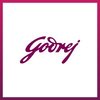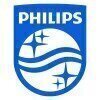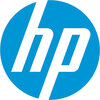
i
Voltas
Filter interviews by
Voltas Interview Questions and Answers
111 Interview questions
The refrigeration cycle is a process that removes heat from a designated area to cool it, using a refrigerant.
1. Evaporation: Refrigerant absorbs heat and evaporates in the evaporator coil, cooling the surrounding area.
2. Compression: The vaporized refrigerant is compressed by the compressor, raising its pressure and temperature.
3. Condensation: The high-pressure vapor releases heat in the condenser coil and conde...
A U trap prevents sewer gases from entering the air conditioning system by creating a water seal.
Prevents foul odors: The water in the U trap acts as a barrier to block sewer gases.
Condensation management: It collects condensate from the AC unit, ensuring proper drainage.
Maintenance: Regular checks are needed to ensure the water seal is intact and not evaporated.
TR (Time Response) is calculated by measuring the time taken for a system to respond to a stimulus.
Identify the system's input and output parameters.
Measure the time taken from input application to output response.
Use a stopwatch or data acquisition system for accuracy.
Example: If a sensor takes 2 seconds to respond after a signal is sent, TR = 2 seconds.
Working in a VRF system involves understanding its components, installation, and maintenance for efficient climate control.
Understand the components: VRF systems consist of an outdoor unit, multiple indoor units, and refrigerant piping.
Installation: Properly size and install the outdoor unit and connect it to the indoor units using refrigerant lines.
Refrigerant management: Monitor refrigerant levels and ensure the...
The refrigeration cycle is a thermodynamic process that removes heat from a designated area to lower its temperature.
1. Evaporation: Refrigerant absorbs heat from the environment, turning from liquid to gas.
2. Compression: The gas is compressed, increasing its pressure and temperature.
3. Condensation: The hot gas releases heat to the surroundings, condensing back into a liquid.
4. Expansion: The liquid refrigerant ...
An air conditioner cools indoor air by removing heat and humidity, ensuring comfort in living and working spaces.
Heat Exchange: Air conditioners use refrigerants to absorb heat from indoor air and release it outside.
Humidity Control: They reduce humidity levels, making the air feel cooler and more comfortable.
Air Filtration: Many units include filters that clean the air by trapping dust, allergens, and pollutants.
...
I'm seeking new challenges and opportunities for growth that align with my career goals and values.
Desire for professional growth: I'm looking for a role that offers more opportunities for advancement, such as leadership training.
Alignment with values: I want to work for a company whose mission resonates with my personal values, like sustainability or community service.
New challenges: I'm eager to tackle different...
Sales is the process of exchanging goods or services for money, involving persuasion and relationship-building with customers.
Sales involves identifying customer needs and providing solutions.
It includes various techniques like cold calling, networking, and presentations.
For example, a car salesperson demonstrates features to persuade a buyer.
Sales can occur in B2B (business-to-business) or B2C (business-to-consum...
Marketing is the process of promoting, selling, and distributing a product or service to meet customer needs and drive business growth.
Identifying target audiences: Understanding who your customers are, e.g., millennials for tech gadgets.
Creating value: Developing products that solve problems, like eco-friendly packaging.
Building brand awareness: Using social media campaigns to increase visibility, e.g., Nike's 'J...
LTIFR (Lost Time Injury Frequency Rate) measures workplace safety; my last organization maintained a low LTIFR through proactive measures.
Our LTIFR was consistently below the industry average, reflecting our commitment to safety.
Implemented regular safety training sessions, resulting in a 20% reduction in incidents.
Conducted thorough incident investigations to identify root causes and prevent recurrence.
Engaged em...
Voltas Interview Experiences
150 interviews found
I appeared for an interview in Apr 2025, where I was asked the following questions.
- Q1. 1. What is the Pipe laying process? 2. Pumps alignment? 3. Budgeting 4. Costing 5. Vendor Management 6. Planning 7. Scheduling 8. Smooth Execution Strategy 9. Client Management 10. Management
- Ans.
The process involves planning, executing, and managing various aspects of pipe laying and project management.
1. Pipe Laying Process: Involves site preparation, trenching, pipe installation, backfilling, and testing for integrity.
2. Pumps Alignment: Ensures pumps are correctly aligned to prevent wear and tear; use laser alignment tools for precision.
3. Budgeting: Create a detailed budget considering materials, labor, an...
- Q2. 1. Pumps Installation Process 2. MS, DI, HDPE, GI, UPVC, PVC, SS, Laying and Fabrication process
Interview Preparation Tips
My name belal khan ac tacnesean
(2 Questions)
- Q1. My name belal khan ac tacnesean
- Q2. All ac tacnesean
(1 Question)
- Q1. My name belal khan ac tacnesean
I applied via Campus Placement and was interviewed in Dec 2024. There were 2 interview rounds.
They asked about 60 questions in total with 30 aptitude and 30 technical questions
(3 Questions)
- Q1. The hr and technical round occured at same time there are there people panel with one hr two technical interviewers with for mechanical and electrical questions.
- Q2. My first questions is explain about HVAC and vapour compression cycle and they asked about 10 units like unit of heat power etc and they finally asked about current scenerio questions finally interview end...
- Q3. The interview go on about 30 minutes and the asked me about to draw the pv and ts diagrama of hvac finally the interview is over and got selected for 5lpa. Good luck.
Interview Preparation Tips
I applied via Job Portal and was interviewed in Jul 2024. There were 2 interview rounds.
(4 Questions)
- Q1. What are the necessary details about yourself that you would like to share?
- Ans.
I am a dedicated and motivated individual with a strong passion for human resources and a proven track record of success in previous roles.
I have a Bachelor's degree in Human Resource Management from XYZ University.
I have completed internships at ABC Company and DEF Organization, where I gained hands-on experience in recruitment, training, and employee relations.
I am proficient in HR software such as SAP and Workday, a...
- Q2. What were your favorite subjects that you studied in your final years? Please elaborate on the same.
- Ans.
My favorite subjects in my final years were psychology and business studies.
I enjoyed studying psychology because I found it fascinating to learn about human behavior and the mind.
I was drawn to business studies because I have a keen interest in understanding how organizations operate and make strategic decisions.
Both subjects provided me with valuable insights and knowledge that I believe will be beneficial in a corpo...
- Q3. What are the essential labor laws that an HR professional must be knowledgeable about, including regulations regarding bonuses, gratuity, and leave policies, along with relevant case studies?
- Ans.
Essential labor laws for HR professionals include regulations on bonuses, gratuity, and leave policies.
Fair Labor Standards Act (FLSA) - regulates minimum wage, overtime pay, recordkeeping, and child labor
Family and Medical Leave Act (FMLA) - provides eligible employees with up to 12 weeks of unpaid, job-protected leave for certain family and medical reasons
Equal Pay Act - prohibits wage discrimination based on gender
W...
- Q4. What is the process by which a company conducts campus placements in potential colleges?
- Ans.
Companies conduct campus placements by collaborating with colleges, setting criteria, conducting pre-placement talks, and organizing interviews.
Collaborate with colleges to schedule placement drives
Set criteria for eligibility such as minimum GPA, specific skills, etc.
Conduct pre-placement talks to introduce the company and job roles
Organize interviews for shortlisted candidates on campus
Select candidates based on perf...
(2 Questions)
- Q1. Can you introduce yourself?
- Q2. What is the technical process involved in recruitment and campus placement?
- Ans.
The technical process of recruitment and campus placement involves sourcing candidates, screening resumes, conducting interviews, and making job offers.
Sourcing candidates through job portals, social media, employee referrals, etc.
Screening resumes to shortlist candidates based on qualifications and experience.
Conducting interviews to assess candidates' skills, knowledge, and cultural fit.
Making job offers to selected ...
Interview Preparation Tips
- Excel
- Email etiquettes
1. Dress appropriately.
2. Understand key details about the company. 3. Remain confident, even when you do not know the answer, as the interview assesses your ability to handle stress.
4. Have sufficient knowledge of a few subjects and their essential topics that you studied in college.
5. Ensure your communication is as clear as possible.
I applied via Campus Placement and was interviewed in Oct 2024. There were 2 interview rounds.
(1 Question)
- Q1. Thermodynamics, heat transfer , machine design , simulation
(1 Question)
- Q1. Heat transfer , refrigeration cycle ,machine design related , knowledge of cad softwares
Interview Preparation Tips
I appeared for an interview in Dec 2024.
(2 Questions)
- Q1. 3 yars mumbai working and 6 years Oman working
- Q2. Air conditioning ac technician mentanens working
Interview Preparation Tips
I applied via Referral and was interviewed in Oct 2024. There were 3 interview rounds.
(2 Questions)
- Q1. Introduction or your self
- Q2. About your experience
(2 Questions)
- Q1. Refrigeration related
- Q2. Field related questions
Related to study ex: BA
Interview Preparation Tips
- Field knowledge and marketing
I appeared for an interview in May 2025, where I was asked the following questions.
- Q1. In an interview, does the HR typically start by asking for a self-introduction, followed by questions about your experience and the position you have previously held?
- Q2. Honestly, hard worker, active person
I appeared for an interview in May 2025, where I was asked the following questions.
- Q1. What is the cycle of refrigeration?
- Ans.
The refrigeration cycle is a process that removes heat from a designated area to cool it, using a refrigerant.
1. Evaporation: Refrigerant absorbs heat and evaporates in the evaporator coil, cooling the surrounding area.
2. Compression: The vaporized refrigerant is compressed by the compressor, raising its pressure and temperature.
3. Condensation: The high-pressure vapor releases heat in the condenser coil and condenses ...
- Q2. What is the purpose of a U trap in air conditioning installation?
- Ans.
A U trap prevents sewer gases from entering the air conditioning system by creating a water seal.
Prevents foul odors: The water in the U trap acts as a barrier to block sewer gases.
Condensation management: It collects condensate from the AC unit, ensuring proper drainage.
Maintenance: Regular checks are needed to ensure the water seal is intact and not evaporated.
Interview Preparation Tips
I appeared for an interview in May 2025, where I was asked the following questions.
- Q1. Tell me about yourself.
- Q2. What did you learn from your previous company, and what is your daily routine in your current company?
- Ans.
I learned valuable skills in teamwork and project management, and my daily routine involves collaboration and continuous learning.
Collaboration: I learned the importance of working effectively in teams, which helped us complete projects ahead of schedule.
Problem-solving: I developed critical thinking skills by tackling complex engineering challenges, such as optimizing a production process.
Time management: I learned to...
- Q3. What were your salary expectations?
- Ans.
I expect a competitive salary that reflects my skills and the industry standards for an Associate Engineer role.
Research industry standards: For example, I found that the average salary for an Associate Engineer in my area is around $70,000.
Consider my experience: With my internship and project experience, I believe a salary in the range of $65,000 to $75,000 is reasonable.
Flexibility: I am open to discussing the full ...
Top trending discussions






Voltas Interview FAQs
Some of the top questions asked at the Voltas interview -
The duration of Voltas interview process can vary, but typically it takes about less than 2 weeks to complete.
Tell us how to improve this page.
Voltas Interviews By Designations
- Voltas Assistant Manager Interview Questions
- Voltas Service Engineer Interview Questions
- Voltas Safety Officer Interview Questions
- Voltas AC Technician Interview Questions
- Voltas Site Engineer Interview Questions
- Voltas Sales Executive Interview Questions
- Voltas Project Manager Interview Questions
- Voltas Management Trainee Interview Questions
- Show more
Interview Questions for Popular Designations
Overall Interview Experience Rating
based on 184 interview experiences
Difficulty level
Duration
Interview Questions from Similar Companies
Voltas Reviews and Ratings
based on 2.3k reviews
Rating in categories
|
Assistant Manager
494
salaries
| ₹6.3 L/yr - ₹13.2 L/yr |
|
Senior Engineer
222
salaries
| ₹4 L/yr - ₹9.6 L/yr |
|
Service Engineer
212
salaries
| ₹3.5 L/yr - ₹8 L/yr |
|
AC Technician
204
salaries
| ₹1.4 L/yr - ₹4.5 L/yr |
|
Hvac Technician
136
salaries
| ₹1.8 L/yr - ₹5 L/yr |

vivo

OPPO

Dell

LG Electronics
- Home >
- Interviews >
- Voltas Interview Questions












